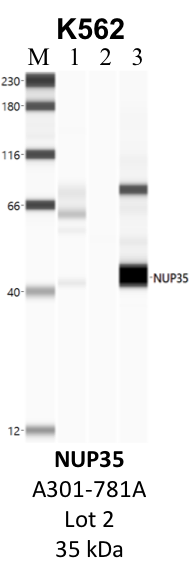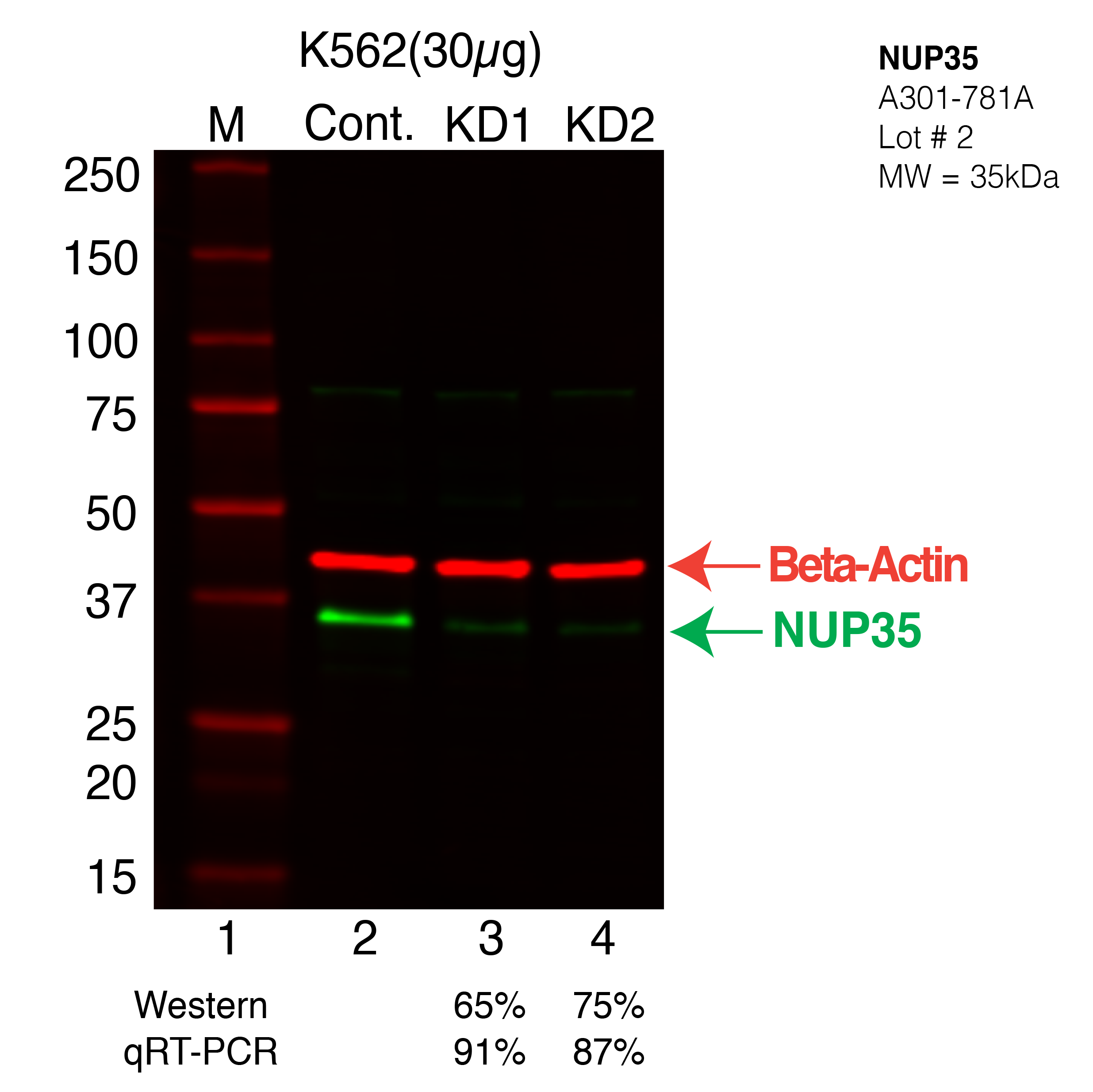| K562 | 
Caption: IP-WB analysis of K562 whole cell lysate using the NUP35 specific antibody, A301-781A. Lane 1 is 2.5% of five million whole cell lysate input. Lanes 2 and 3 are 50% of IP enrichment from five million whole cell lysate using normal IgG antibody and the NUP35-specific antibody, A301-781A. The same antibody was used to detect protein levels via Western blot. This antibody passes preliminary validation and will be further pursued for secondary validation. *NOTE* Protein sizes are taken from Genecards.org and are only estimates based on sequence. Actual protein size may differ based on protein characteristics and electrophoresis method used. Method: immunoprecipitation Status: Released Lab: Yeo Lab | 
Caption: Western blot following shRNA against NUP35 in K562 whole cell lysate using NUP35 specific antibody. Lane 1 is a ladder, lane 2 is K562 non-targeting control knockdown, lane 3 and 4 are two different shRNA against NUP35. NUP35 protein appears as the green arrow, Beta-actin serves as a control and appears in red arrow. Releated Sample: BGKLV38-41 Status: Released Lab: Graveley Lab |
|---|